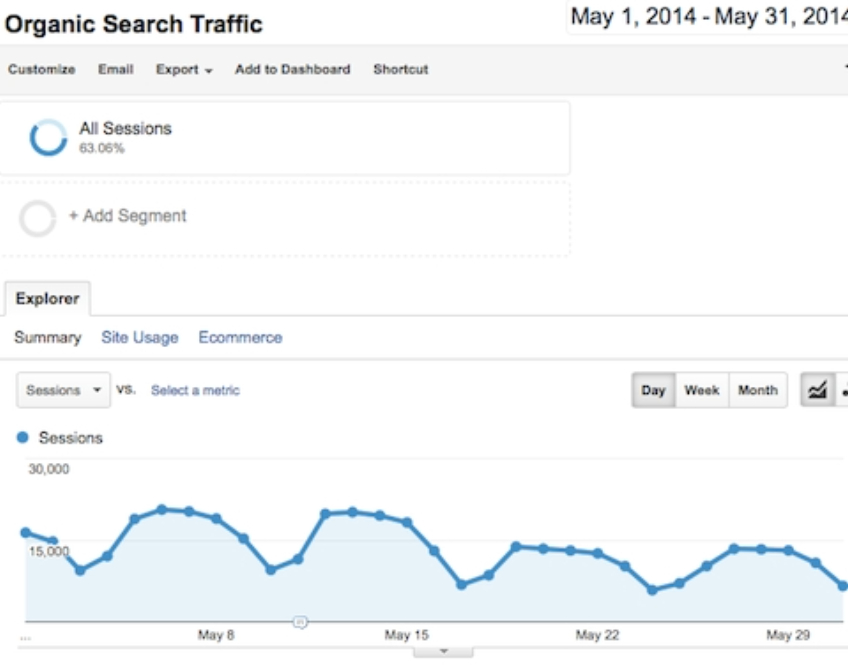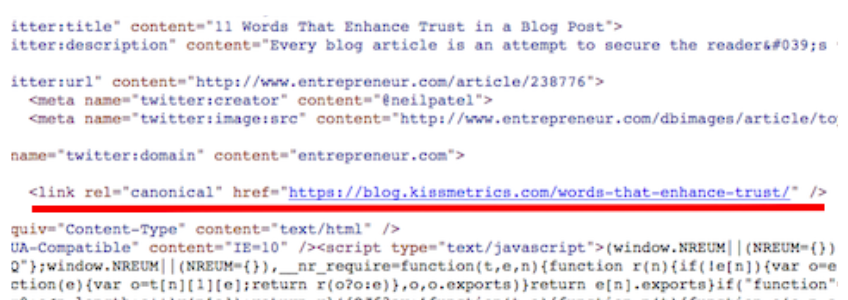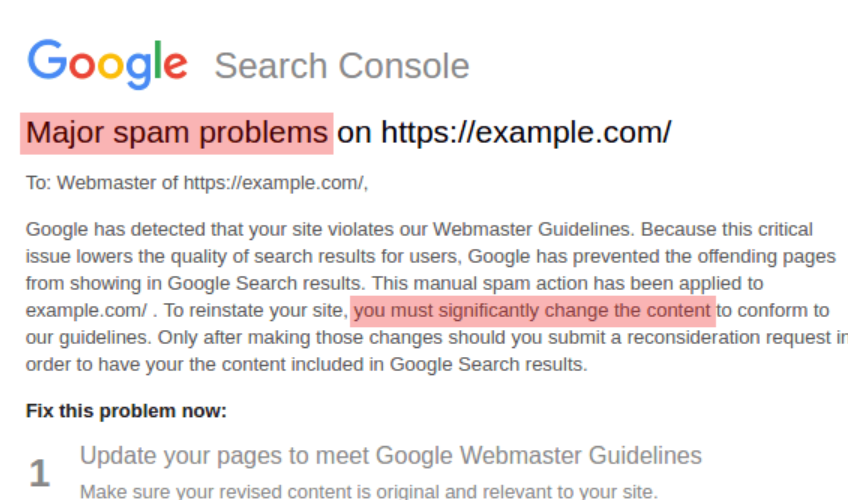In 2014, Google hit us with a penalty, and our traffic plummeted. The reason was shared duplicate content on another site. We had to perform a deep analysis and investigation into the root cause of this significant traffic dip. Today, we’ll reflect on this event and ask a new question: Does the same code solution work today?
You spend hours, if not days, writing a great blog post. The last thing you want is for it not to be seen, right?
So, what do you do to ensure it gets seen? You share it on your social media profiles, tell a few friends to promote it and then repost the exact same blog post on other sites like Medium and LinkedIn.
The question is: should you be doing this? Will reposting your content hurt your SEO or drive you more traffic and sales? You can also check you’re not making other SEO mistakes here.
Reposting can hurt your SEO if done wrong
At KISSmetrics, we let others repost our blog posts. We push out the exact same content on sites like Entrepreneur.com and Search Engine Journal.
When we first started doing this, we saw an increase in referral traffic by around 9,492 monthly visitors, and our search traffic stayed consistent. Then Google rolled out a Panda update, and this is what happened to our traffic:

We lost a whopping 225,418 visitors a month. More specifically, we lost 225,418 visitors from Google each month.
Eventually, we recovered from the penalty, but our search traffic still wasn’t as high as it used to be.
We learned that reposting your content on sites more authoritative than yours, even if you publish it first on your blog and have them link back, can cause a duplicate content penalty.
We fixed this potential penalty problem by getting sites like Entrepreneur.com to use a rel=canonical.

If you aren’t familiar with rel=canonical, look at the image above. It’s the source code from Entrepreneur.com. As you can see, it has a line of code that states:
<link rel=”canonical” href=”https://blog.kissmetrics.com/words-that-enhance-trust/” />
By using this code, Entrepreneur.com is telling Google to give all credit for that page to KISSmetrics and not to index the Entrepreneur.com page within Google’s search results.
So, if you plan to repost your content, make sure the sites you repost on use a rel=canonical.
What sites should you repost on?
As I mentioned above, you need to publish content only on sites that are willing to use a rel=canonical. Most big sites, such as Medium or LinkedIn, don’t give you full control.
That means when you republish your content on these sites, you will eventually get penalised even if you link back to the original article. In this case, you have a few options:
- Rewrite the content – You can rewrite and publish your blog post on these sites so the content isn’t duplicated.
- Talk to the site owner – there is no harm in asking the site owner or editor to add a rel=canonical. We did this with Entrepreneur Magazine, and they gladly added it to their site even though it required development work on their end.
- Post the content on the other site only – sometimes it’s best to publish your highest quality posts on other people’s sites, not yours. You will get branding, a link back to your site, and maybe some sales. In most cases, the big sites want exclusivity, so you won’t be able to repurpose this content on your blog or other people’s blogs.
From a practical standpoint, aim for option #2 first. If that doesn’t work, go for option #3 next. We rarely consider option #1.
Whatever you do, remember that it is not all right to have duplicate content roaming around the web without a rel=canonical. You may get more traffic in the short run, but Google will penalize you.
Republish your content in different languages
In addition to letting authority sites republish my blog posts, We’ve tested republishing our content in different countries. We permit Foreign-language sites to take content from Quick Sprout, translate it, and republish it.
We’ve been doing this for years without any Panda updates. Most reposts do not use a rel=canonical, but the most recent ones do.
From our experiences at Quick Sprout, Google doesn’t seem to regard content in a different language as duplicates.
This could be because humans, not computers, translate the content. That means it won’t match the original and thus will not be considered a duplicate.
We recommend letting others translate your content and republish it on their sites. It will expose you to a whole new audience. Just ask the sites’ owners to use a rel=canonical if Google changes its algorithm.
Don’t repost a portion of your blog post
Reposting the first paragraph of your blog post is fine, but when you start reposting a few paragraphs or more, you are asking for trouble.
There doesn’t seem to be a workaround for this. When we reposted our KISSmetrics content on Entrepreneur.com, we got penalized even though we had more unique content on the original page than on Entrepreneur.com.
If we reposted the same content, how is it that ours was more unique? Our posts contained comments, while Entrepreneur didn’t. This means our site had more unique – user-generated – content than they did, but we still got hit by the penalty.
Google not only knows if your content is duplicate, but it also automatically notifies you if it determines that the user-generated content on your site is spam.

This is why you shouldn’t play games with Google, especially regarding duplicate content or spamming.
Conclusion
After revisiting whether the rel=canonical line of code is still the standard way to solve this issue. This leaves anyone considering using a carbon-copy piece of content twice a dilemma. Is the potential increase in traffic worth the risk? And equally important, is the side sharing your content willing to insert this code before uploading?
There is one thing you can be sure about – Google will eventually take punitive action if you’re not careful.
Reposting your content won’t help you generate significantly more traffic than you already have. I’ve tested this concept with authority sites with over five million monthly visitors. It’s very rare that they ever drive more than 1,000 visitors from a repost.
If you plan on using this tactic, do it from a branding perspective. Any extra traffic it drives back to you should be considered a bonus. And when using it, make sure you use a rel=canonical.
Find out how to revamp and breathe new life into old content to increase traffic.
